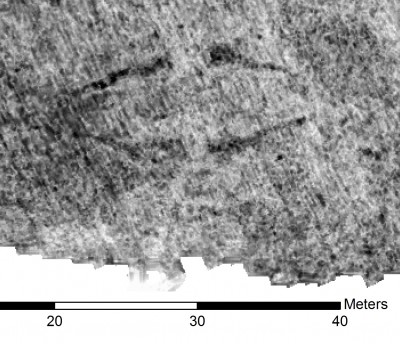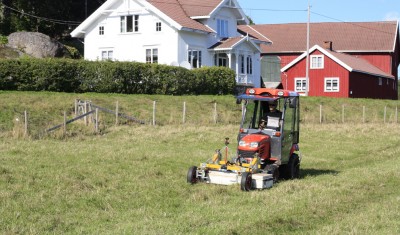Archaeologists think they have found two more Viking ships buried in Vestfold County south of Oslo. The biggest may be 25 metres long, larger than any found so far.

Road construction near the old Viking trading center at Kaupang has led to the discovery of two large ship silhouettes on ground radar pictures. The pictures have been made possible through a venture involving the Norwegian Institute for Cultural Heritage Research (Norsk institutt for kulturminneforskning, NIKU) and the Ludwig Boltzmann Institute for Archeological Prospection and Virtual Archeology.
They portray some “exciting” images with the help of high tech methods including satellites, laser scanning, magnetometers and georadar, according to NIKU officials. The methods can avoid or minimize destructive excavations by allowing archaeologists to register what the Norwegians call kulturminner (cultural antiquities) under the surface with a high degree of precision.

The images of Viking ships, along with several burial mounds, could be the biggest discoveries of their kind for more than a century, and some call them potentially “sensational” while officials urge restraint.
Even though the data so far is startling, the head of the Directorate for Cultural Heritage in Norway, Jørn Holme, told Norwegian Broadcasting (NRK) that people should not expect too much at this stage.
“What we have dicovered so far are the imprints of ships and iron nails,” Holme told NRK. “However we are fairly certain that we will not find an intact Viking ship. It probably has disintegrated since the properties of the local soil are not good enough.”
The imprints of the ships were found by means of georadar, a scanning technology that produces three-dimensional images of objects and structures below ground. “This technology is a breakthrough in the world of archaeology,” say Holme told NRK.
Georadar works well in loose soil, but is less able to penetrate the clay that is needed to preserve wood and other organic objects, says Holme.
Both Norway’s famed Oseberg and Gokstad ships were buried in such favourable clay conditions. The two discoveries, which are considered to be the best preserved Viking ships in the world, were discovered under several tons of stone, tightly packed with clay.
Even if archaeologists are not expecting finds on the scale of the Gokstad and Oseberg sites, there is good reason to believe that other cultural artifacts will be found in the ground.
“There might be a burial in the ship, but one cannot expect the organic material to have survived,” Holme said. “We can hope to find gold, silver, iron, pottery and glass.”
Views and News from Norway/Sven Goll
Join our Forum if you’d like to comment on this story.

